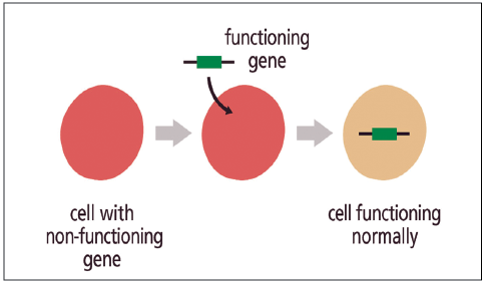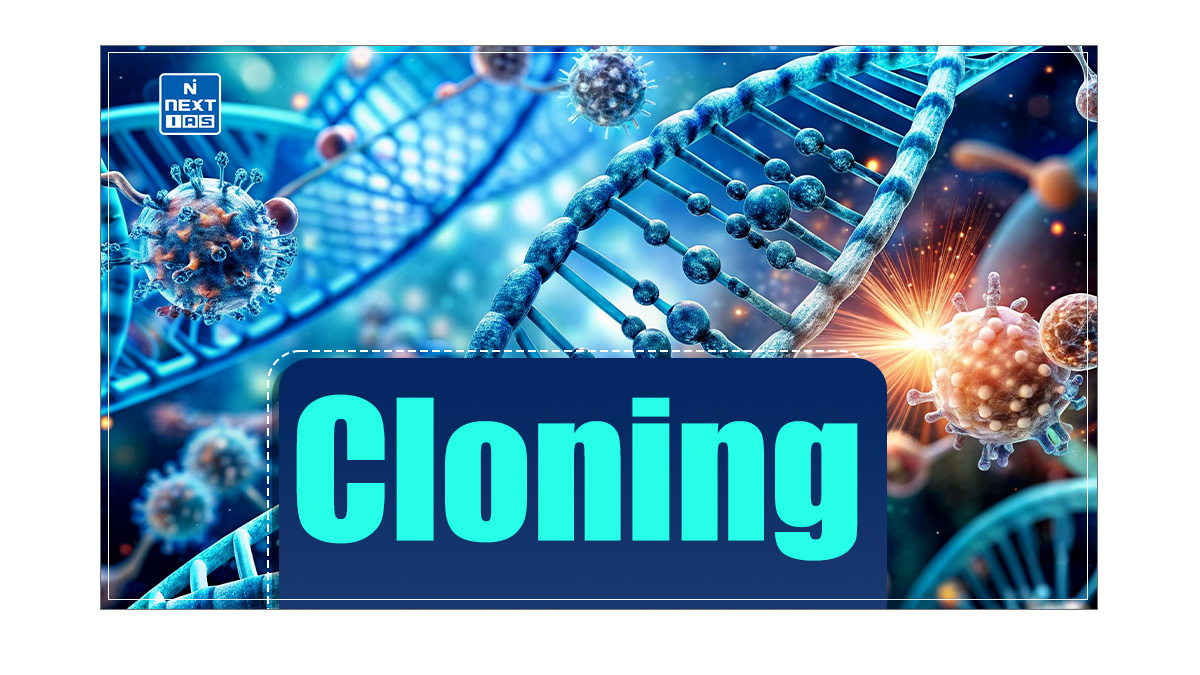
Gene therapy is a medical technique that treats or prevents diseases by inserting functional genes to correct genetic defects. It offers potential cures for hereditary disorders, cancer, and chronic conditions. Despite its promise, challenges like immunity and ethics remain. This article aims to provide about Gene Therapy and its types, advantages, disadvantages & more.
What is Gene Therapy?
- It is an attempt to correct Hereditary Disease in any person. It is a collection of methods that allows correction of a gene defect that has been diagnosed in a child/embryo. Here genes are inserted into a person’s cells and tissues to treat a disease. Correction of a genetic defect involves delivery of a normal gene into the individual or embryo to take over the function of and compensate for the non-functional gene.

Types of Gene Therapy
Germ Line Gene Therapy
- Here germ cells (sperm or egg) are modified by the introduction of functional genes and are integrated in the genome. Therefore, changes due to therapy would be heritable and would be passed on to the later generation. Theoretically, this approach should be highly effective in counteracting genetic disease and hereditary disorders, but at present there are various technical difficulties and ethical concerns that make it difficult to try in human beings.
Somatic Gene Therapy
- Here therapeutic genes are transferred into the somatic cells of a patient. Any modifications and effects will be restricted to the individual patient only and will not be inherited by the patients offspring or any later generation.
Advantages of Gene Therapy
- To give someone who is born with a genetic disease or who develops cancer a chance of the normal life.
- Gene silencing is a concept that in itself is self-efficient for management of many diseases.
- Gene therapy has the potential to eliminate and prevent hereditary diseases, such as cystic fibrosis, and is a possible cure for heart disease, AIDS and cancer.
Disadvantages
- Short-lived Nature of Gene Therapy: Before gene therapy can become a permanent cure for any condition, the therapeutic DNA introduced into target cells must remain functional and cells containing the therapeutic DNA must be long-lived and stable.
- Immune Response: Anytime a foreign object is introduced into human tissues, the immune system has evolved to attack the invader. The risk of stimulating the immune system in a way that reduces gene therapy effectiveness is always a possibility.
- Multigenic Disorders: Conditions or disorders that arise from mutation in a single gene are best candidates for gene therapy. Unfortunately, some of the most commonly occurring disorders, such as heart disease, high blood pressure, Alzheimer’s disease, arthritis and diabetes, are caused by the combined effects of variations in many genes.
- Ethical Considerations: Deciding what is normal and what is not; deciding whether disabilities are diseases and whether they should be cured; deciding whether searching for a cure demeans the live of people who have disabilities are some of the ethical issues associated with it.
Way Forward
It is an exciting new approach that is just making the news. In the future, this technique will be an everyday word used in our households. It will change the field of medicine from what it is today. As scientists discover more genes and their functions, the potential of this treatment is limitless. Our genome is the blueprint of our body. The key to our future is locked in our genome. As researchers start to understand this blueprint, our lives will be forever changed. We now know our fate is indeed in our genes.
Latest Developments in Gene Therapy
- Recent developments in it showcase promising advancements, especially in precision medicine and genetic disease treatments. CRISPR-based therapies are moving towards in vivo applications, aiming to treat genetic disorders like sickle cell disease (SCD) directly within the body, which could enhance accessibility and reduce the reliance on chemotherapy.
- Additionally, new clinical trials are exploring it for hereditary diseases such as amyloidosis, using lipid nanoparticles (LNPs) for effective gene delivery to targeted tissues. These trials indicate the potential of single-dose therapies to correct faulty genes.
- As research progresses, these innovations highlight a shift from conventional therapies to targeted genetic solutions, promising more personalized and efficient treatments for chronic diseases, cancer, and genetic disorders.
Conclusion
It offers long-term solutions for genetic disorders, cancer, and chronic diseases by correcting faulty genes at their source. With advancements like CRISPR, its potential grows, but challenges such as immune responses, high costs, and ethical concerns remain. As research advances, gene therapy is poised to become a key element of precision medicine, improving patient outcomes and quality of life.
Further Reading: CRISPR-Cas9
Frequently Asked Questions (FAQs)
Which is the first gene therapy in India?
India’s first indigenous gene therapy, CAR-T cell therapy, was launched on April 4, 2024, at the Indian Institute of Technology (IIT) Bombay.
Which disease was first successfully cured by gene therapy?
The first disease successfully treated with it was severe combined immunodeficiency (SCID).
Who founded gene therapy?
The concept was first proposed by scientists W. French Anderson, Michael Blaese, and Kenneth Culver in the 1980s. W. French Anderson is often regarded as the “father of gene therapy” for leading the first approved human gene therapy trial in 1990, which treated a four-year-old girl with severe combined immunodeficiency (SCID).
What was the first gene therapy drug?
The first approved gene therapy drug was Gendicine, developed by Shenzhen SiBiono GenTech. It was approved in 2003 by China’s regulatory authorities to treat head and neck squamous cell carcinoma. Gendicine uses an adenovirus to deliver the p53 tumor suppressor gene into cancer cells, helping to inhibit their growth.
What is gene therapy according to NCERT?
According to NCERT, it is a treatment that involves inserting genes into a person’s cells and tissues to treat diseases, especially hereditary diseases.






